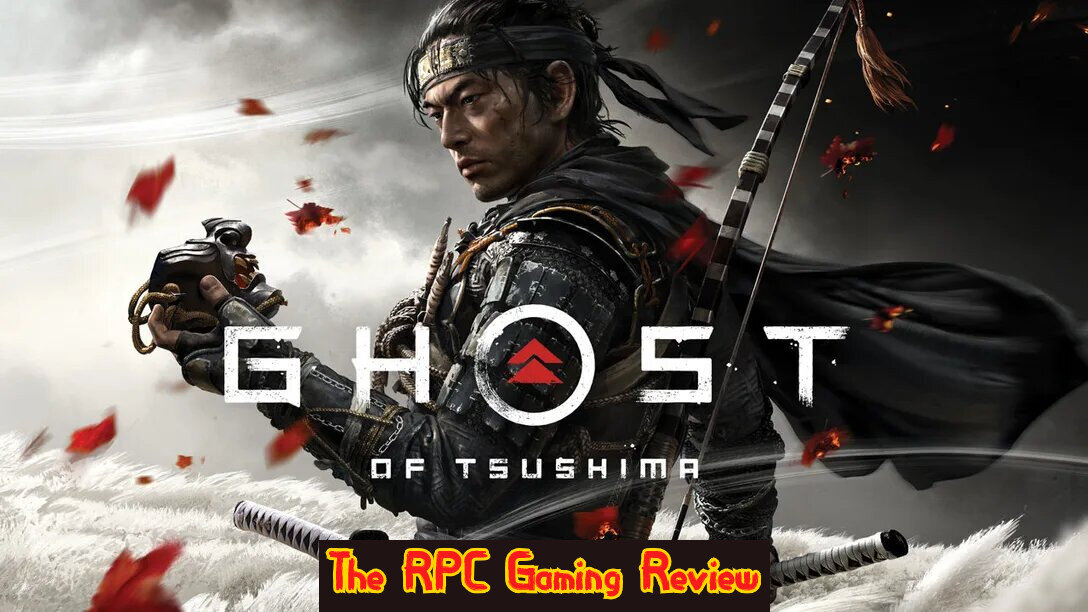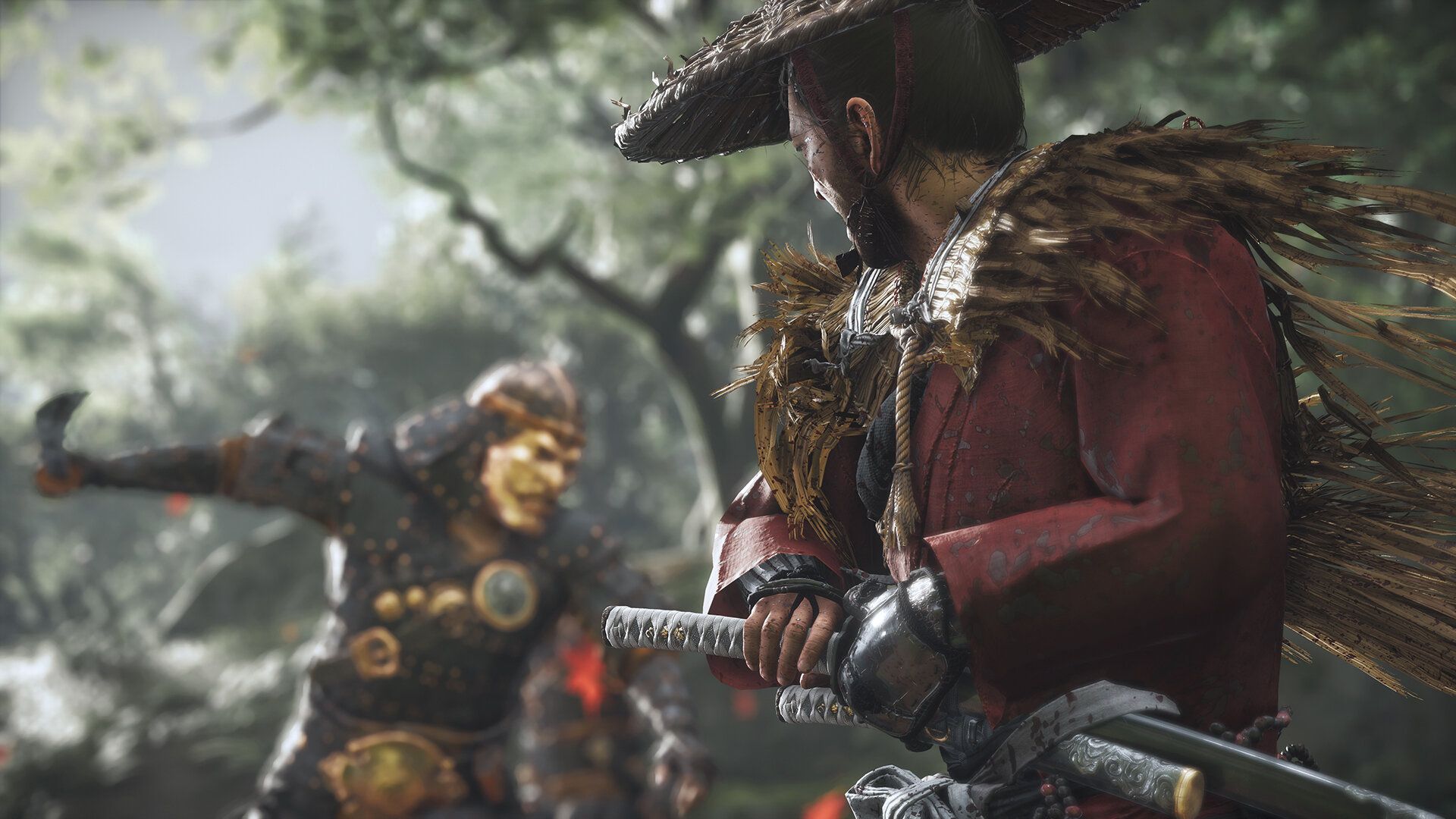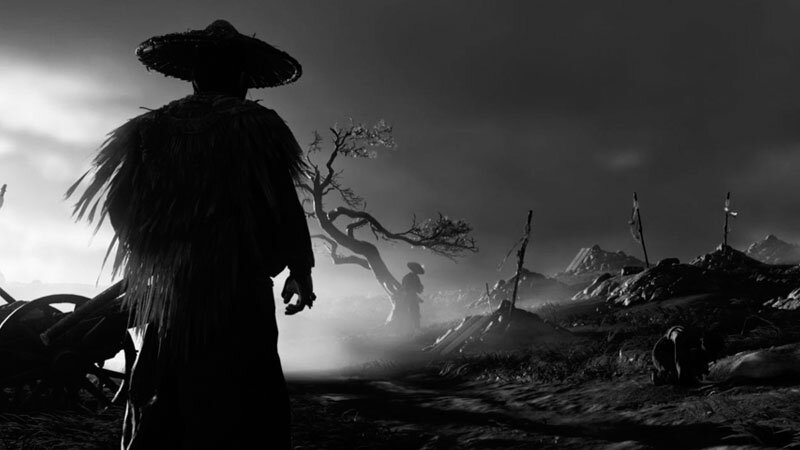The Wandering Soul: A Ghost of Tsushima Review
Reviewed by The Director, Joshua Lozano
Editor’s Note: Welcome to the official RPC Gaming review of Sucker Punch’s magnum opus, Ghost of Tsushima. The samurai epic was published by Sony on July 17th and has gone on to earn many accolades and a heapin’ helpin’ of positive reviews. So what’s our verdict on this visually spectacular Kurosawa simulator? Read on and find out! Take it away, Josh!
The slender samurai wandered along the fog-filled marsh, hand on his blade, searching for a place to rest his weary mind. The wind on his back led him to an enclosed circle in the middle of the flatland. A man stood in its center, katana drawn, and challenged the samurai.
The man – a member of the lethal Straw Hat Ronin – revealed that a bounty was placed on their head, and he was aiming to collect it. The samurai scoffed, proclaiming that it didn’t have to be this way, but the words fell on deaf ears.
Soon, the Samurai unsheathed his sword from its scabbard; the full moon hanging high over the two men, illuminating the fog where it felt as though they were fighting in the heavens, reducing the fighters to silhouettes. A single stroke of the blade could mean life or death for either of them. A long , silent moment passes, both men sizing up the other, trying to instill the fear of God, or the Devil, in them.
But the Ronin was no match for the Samurai, who took his life with the ease of an artist brushing strokes on a blank canvas. The duel of the drowning marsh was done. And the wind blew, carrying the Samurai wherever he was needed.
A Game of Honor
Moments like this are the highlights of Sucker Punch’s latest endeavor. Ghost of Tsushima is perhaps the testament of fully realized open-world exploration, where the player is really made to feel as if they are the embodiment of a folk-tale that is passed around from person to person – a force of reckoning that strikes fear into the hearts of those who commit heinous acts, and an inspiration to those who strive for greatness. In truth, the same could be said of the game’s placement in the modern industry’s landscape: it serves as a shining example of what experiences of this ilk could strive to be, and is an incredible inspiration for many aspiring and established developers in the field that want to make games like this.
But much like a folk tale, the reality of it is not as fantastical. Ghost of Tsushima is a very beautiful game, but flaws in the gameplay and the story keep it from becoming a classic worthy of legendary status.
The main story of the game follows Jin Sakai – the last in the line of the Sakai clan – who joined his uncle, Lord Shimura, in the fight against the Mongolian invaders on their island of Tsushima. Khotan Kahn, the leader of these invaders, attacks ruthlessly, and with most of the Samurai of the island having fallen to their brutal tactics, it’s up to Jin to sacrifice everything he’s learned his whole life in order to save the island from certain destruction.
If one were to distill the gameplay of Ghost, I’d say it’s best described as a stealth brawler. Early on in the game, you find yourself stuck with one set fighting stance to use against enemies that overwhelmed the Samurai in the opening, the Stone stance. As a result, the combat is clunky and stiff, but as Jin strays further and further from the path of honor, he begins to learn how the Mongols fight, and learns different ways of fighting: from a Water stance that smoothly slices through shields, to a Wind stance that makes effective work of ranged attackers like spear-men, and a Moon stance that provides sheer brute strength against larger and more bruiser-style enemies. From there, it becomes a very interesting system where the player must be cautious and patient when it comes to choosing which stance they need to use – which leads to some really intense and challenging combat scenarios that never fail to make me sweat.
Excellence Falls Just Short Here
The game – although engaging in its opening hour, does start to show flaws in its pacing, particularly around its characters. One of the best NPCs in the game – Yuna – is the kind of character that the story is sorely missing early on. Act 2 of the game drags the most, because the “new car smell” of the open world has worn out and given way to a repetitive mission structure and clichéd character motivations.
Speaking of which, this game is about pushing the main heroic character to become a morally gray mythical figure, so why do 80 percent of the characters fall somewhere between pure evil or pure good? This completely contrasts with the themes the story tries to touch upon, at least on an impactful level. For example, Lady Masako is a very frustrating character, and early on, Jin and Lord Shimura are so set in their ways that it makes it really hard to engage with the gameplay and storyline, especially as the juxtapositions between Jin remembering something from his past become more of a distraction (it’s when a poison dart becomes available that my momentum ground to a halt). The characters that I really enjoyed were Kenji the sake salesman and Norio the warrior monk, whose motivations tied neatly into the story, and felt like natural extensions of its themes. They showcased two extremes that slowly folded into each other, with Kenji becoming a more honorable man despite starting off as a swindling moron, and Norio becoming a more angry and hateful person after being pushed to his emotional breaking point. Sensei Ishikawa’s hunt for the traitorous Tomoe started to grate, and a large part of that is that these missions drag ON and ON with events that feel like repeats of story beats you’ve played through before. And even then, the main story doesn’t excel beyond a classic samurai pastiche for more than two thirds of its runtime. It’s nice in the moment, but repetition reveals the cracks within its foundation.
As far as the exploration goes, while traversal around the open world is great, the platforming is not perfect. Initially, climbing downhill was a huge hindrance as Jin sometimes would miss a small ledge, which would result in many plummeting deaths. Sucker Punch later patched this out, and downhill travel became a lot more manageable, which was a very welcome change and showed that they understood the negative feedback the game did have at launch… if only they would also acknowledge the camera that the game has. During exploration, it perfectly shows the grandness of the island of Tsushima, but in combat, sometimes the camera angles will let environmental obstacles come up close right in the foreground, and on occasion, it would completely pass through a wall and completely obscure the action.
This isn’t the only issue I have with the game, because while direct combat is amazing, the stealth combat doesn’t feel as fresh as it could be. The many options to kill enemies are promising, from a long and half bow, to smoke and sticky bombs, and even a poison blowdart; however the general stealth was painfully basic, as the A.I either rarely saw you even when they were right in front of Jin, and once caught, you’d have to leave the area wholesale in order to try another attempt at stealth instead of hiding out and letting the A.I. try to find you.
Aesthetically speaking, the environments are probably the most beautiful the PS4 has ever pulled off… but character models range from looking solid to looking really rough, and facial animations sometimes feel too rubbery.
Still, the Ghost Grabs You
Up until this point, you may think that The Director has kinda lost his mind and is being completely nitpicky when it comes to flaws in the game, but although I don’t think this game is perfect… I still enjoyed it enough to surprisingly earn the platinum trophy! Somehow, through all the issues and minor problems I had with the game, I found myself wanting to continue playing it.
My gripes with the game contrast with the stellar highs it delivers. The third act in particular is when it becomes something special, story-wise and gameplay-wise. The ending in particular – which I do not want to spoil – added the perfect layer of complexity that elevated the story, and all the characters eased up and started to grow on me.
At a glance, the open world structure may feel no different from others in this sub-genre of games; however, the use of the wind as a guide to waypoints and the lack of a mini-map really do work wonders to immerse the player in the environment. Sometimes, riding along the roads feels as epic as the many Mongol camps Jin has to clear out, and the fact that the game never goes full on fantastical with its ideas grounds the story in reality, making the player feel like a wandering legend that would come and go wherever and whenever they are needed.
Praise must also be given to the Japanese voice actors (for the record, I played this game in Kurosawa Mode 90% of the time for my first playthrough, in Japanese, and am checking it out in color in English for the second playthrough): Kazuya Nakai is an amazing standout as Jin, who gives him the gravitas of an amazing Toshiro Mifune performance at the peak of his career. In fact, Kurosawa mode is a beautiful alternative to the game’s normal settings, with some of the best film grain I’ve ever seen in a game by far, and the soundtrack change to an engrossing mono sound makes everything more immersive. Both color and Kurosawa mode are equally as beautiful, and you cannot go wrong with either approach to the game.
At the end of the day, Ghost of Tsushima’s charm outweighs almost all of the negatives. This rich world just sucks the player in and engrosses them in the legend of the Ghost, and the struggles of the second act could reflect the uphill struggles of the islanders of Tsushima. While it may not be my personal game of the year, I can see why it has struck a chord with a lot of people, and if Sucker Punch desires to make a sequel to this IP, I truly believe that we could be on the cusp of the next great franchise in the upcoming console generation.
For now though? I’ll gladly pop in the game, and wander the countryside of the island, watching the autumn leaves gently waft through the breeze, or walk through the spider-lilies with my hands stretched out. Just like walking through one’s hometown: it might not be perfect, but it’s a beauty that never truly leaves you.
Developer: Sucker Punch
Publisher: Sony
Platform: Playstation 4












